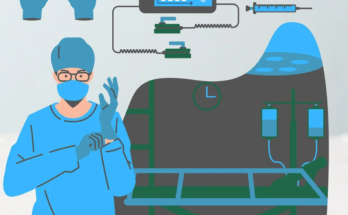Short-Term Disability Insurance: Short-term disability insurance (STDI) is a critical safety net for individuals who may temporarily lose their ability to work due to a non-work-related illness, injury, or medical condition. This insurance provides income replacement, helping policyholders maintain financial stability while they recover. This article delves into the intricacies of short-term disability insurance, including its types, benefits, application process, costs, and factors to consider when choosing a policy.
Understanding Short-Term Disability Insurance
Short-term disability insurance is designed to replace a portion of an individual’s income when they are unable to work for a limited time, usually from a few weeks up to six months. Unlike long-term disability insurance, which covers extended periods of disability, STDI is meant to provide immediate financial support during recovery from temporary disabilities.
Key Features of Short-Term Disability Insurance
- Coverage Duration: STDI typically covers a period ranging from a few weeks up to six months, depending on the policy and the nature of the disability.
- Income Replacement: STDI usually pays a percentage of your pre-disability income, typically between 50% to 70%. This percentage can vary based on the policy.
- Waiting Period: Most short-term disability policies have a waiting period (also known as an elimination period) before benefits kick in, which can range from 0 to 14 days.
- Tax Considerations: Benefits received from short-term disability insurance may be taxable, depending on how the premiums were paid. If premiums were paid with after-tax dollars, benefits are usually tax-free.
- Medical Documentation: To qualify for benefits, individuals must provide medical documentation from a healthcare provider confirming their disability and inability to work.
Types of Short-Term Disability Insurance
There are generally two main types of short-term disability insurance: employer-sponsored and individually purchased policies.
1. Employer-Sponsored Short-Term Disability Insurance
Many employers offer short-term disability insurance as part of their employee benefits package. This insurance is typically provided at little or no cost to employees. Here are some key points:
- Automatic Enrollment: Employees are often automatically enrolled in the plan, and premiums may be deducted from their paychecks.
- Limited Coverage: Employer-sponsored plans may have limited coverage amounts or specific exclusions, so it’s essential to review the policy details.
- Coordination with Other Benefits: Some employer-sponsored plans may coordinate with other benefits, such as workers’ compensation or long-term disability insurance.
2. Individually Purchased Short-Term Disability Insurance
For individuals whose employers do not offer STDI or for those who want additional coverage, purchasing a standalone policy is an option. Here’s what to consider:
- Customizable Coverage: Individuals can tailor coverage to meet their specific needs, including choosing the benefit amount, waiting period, and duration of coverage.
- Portable Coverage: Individual policies are not tied to employment, meaning coverage continues even if the individual changes jobs.
- Higher Premiums: Individually purchased policies may have higher premiums compared to employer-sponsored plans, depending on coverage options.
Benefits of Short-Term Disability Insurance
Short-term disability insurance provides several advantages that contribute to financial security during challenging times.
1. Income Protection
The primary benefit of STDI is income replacement during periods of disability. This financial support is crucial for covering essential expenses such as:
- Mortgage or rent payments
- Utility bills
- Groceries
- Childcare and education expenses
2. Peace of Mind
Having short-term disability insurance allows individuals to focus on recovery rather than financial stress. Knowing that they have a safety net provides peace of mind during difficult times.
3. Access to Medical Care
With the financial burden alleviated, individuals can seek necessary medical care and rehabilitation services without the worry of lost income.
4. Support for Family Responsibilities
Short-term disability insurance helps policyholders manage family responsibilities during recovery. Whether it’s childcare, household tasks, or personal care, financial support can ease the burden on the individual and their family.
Eligibility for Short-Term Disability Insurance
Eligibility criteria for short-term disability insurance can vary by policy and insurer. Here are some common factors:
1. Employment Status
Most employer-sponsored short-term disability plans require employees to be full-time and have completed a probationary period. Individual policies may have different criteria.
2. Medical Condition
To qualify for benefits, individuals must have a medical condition that prevents them from performing their job duties. This can include illnesses, injuries, surgeries, or pregnancy-related complications.
3. Medical Documentation
Insurers typically require medical documentation from a healthcare provider to confirm the diagnosis and treatment plan. This documentation is crucial for processing claims.
4. Waiting Period
Individuals must be aware of the waiting period before benefits begin. If they can return to work before the waiting period ends, they may not qualify for benefits.
The Application Process
Applying for short-term disability insurance involves several steps:
1. Review Policy Terms
Before applying, individuals should review the policy terms to understand coverage limits, waiting periods, and eligibility requirements.
2. Obtain Medical Documentation
Individuals should gather necessary medical documentation from their healthcare provider, including diagnosis, treatment plans, and expected recovery times.
3. Complete Application Forms
Most insurers require completion of application forms that include personal information, employment details, and medical history.
4. Submit Claim
Once the application is complete, individuals can submit their claim to the insurer. Ensure that all required documentation is included to avoid delays.
5. Await Approval
After submission, the insurer will review the claim and medical documentation. This process can take several days to weeks. The insurer may request additional information during this period.
6. Receive Benefits
If the claim is approved, benefits will be issued according to the policy terms. It’s important to understand how and when payments will be received.
Costs of Short-Term Disability Insurance
The cost of short-term disability insurance can vary based on several factors:
1. Premium Rates
Premiums for short-term disability insurance are typically expressed as a percentage of the insured’s income. Rates may range from 1% to 3% of the monthly salary. For example, a person earning $5,000 per month might pay between $50 and $150 per month in premiums.
2. Benefit Amount
The chosen benefit amount will impact premium costs. Policies that offer higher monthly benefits usually come with higher premiums.
3. Waiting Period
Policies with shorter waiting periods may have higher premiums, while those with longer waiting periods can be more affordable.
4. Age and Health
Younger individuals typically pay lower premiums, while older applicants or those with pre-existing medical conditions may face higher rates due to increased risk.
5. Occupation
Certain occupations may have higher premiums based on the level of risk involved. High-risk professions may lead to increased costs.
6. Policy Features
Optional features or riders, such as cost-of-living adjustments (COLA) or coverage for specific conditions, may increase premiums but provide added security.
Short-term disability insurance is an essential component of a comprehensive financial safety net. It provides critical income protection during temporary disabilities, allowing individuals to focus on recovery without the stress of financial instability. Understanding the types, benefits, eligibility criteria, and costs associated with STDI empowers individuals to make informed decisions about their coverage. By selecting the right policy, individuals can ensure they are adequately protected in times of need, promoting overall well-being and peace of mind.




